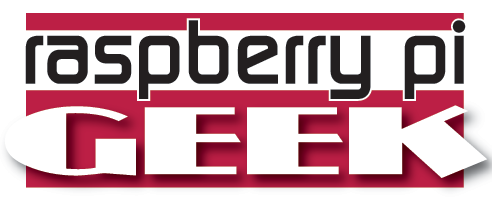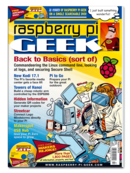Getting Out of the Box
Joe Casad
I’m always excited to see the next issue of Raspberry Pi Geek go to press. When we started doing this magazine, we knew we would have plenty to talk about – with helpful scripts, cool little projects, quirky do-it-yourself contraptions, and all the other delightful surprises we’ve all come to expect from the Raspberry Pi community. But no one could have guessed that so many new cool things would appear in such a short time – specialty add-on boards, alternative Pi-like mini-computer systems, and hundreds of other gadgets and gizmos.
I'm always excited to see the next issue of Raspberry Pi Geek go to press. When we started doing this magazine, we knew we would have plenty to talk about – with helpful scripts, cool little projects, quirky do-it-yourself contraptions, and all the other delightful surprises we've all come to expect from the Raspberry Pi community. But no one could have guessed that so many new cool things would appear in such a short time – specialty add-on boards, alternative Pi-like mini-computer systems, and hundreds of other gadgets and gizmos. The reasons for this explosion are many – the most obvious is that people are getting creative because they are having such a good time. But beyond that, advances in the electronics industry make it easier to engineer and produce new products with smaller production runs. Also, crowdfunding services like Kickstarter and indiegogo have revolutionized the task of raising money for niche products (which was often a limiting factor in the past).
Then there is the fact that, when things start happening in the high-tech industry, they really start happening. Momentum breeds more momentum – money follows excitement, and press coverage follows money. Even beyond these other factors, though, it is safe to say that Raspberry Pi and the open hardware revolution wouldn't be the phenomena they are today if people didn't connect with these extraordinary tools at some organic level. Eben Upton and the other Pi founders are right: People have been missing the chance to tinker – computers should offer a means to create, not just consume.
At Raspberry Pi Geek, we aren't just sharing Raspberry Pi with our readers, we're sharing the whole exciting maker mindset. One could actually publish articles indefinitely on the Raspberry Pi as yet another Linux system (how to set up SSH, how to set up Apache, how to set up Samba, …), but what really excites us is getting beyond the internals. Sure we want our readers to learn Linux, but the system itself is not the destination: it's the starting point for a big, beautiful adventure that might include breadboards, wires, resistors, capacitors, temperature sensors, servomotors, electric trains, and even (as you'll learn in this issue) electric paint.
[...]
Use Express-Checkout link below to read the full article (PDF).








